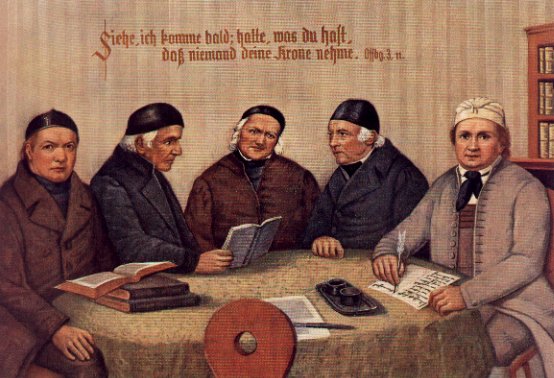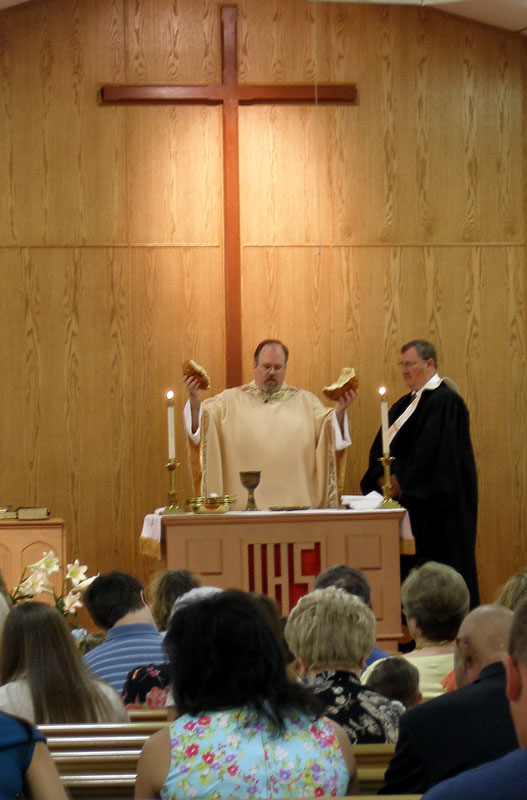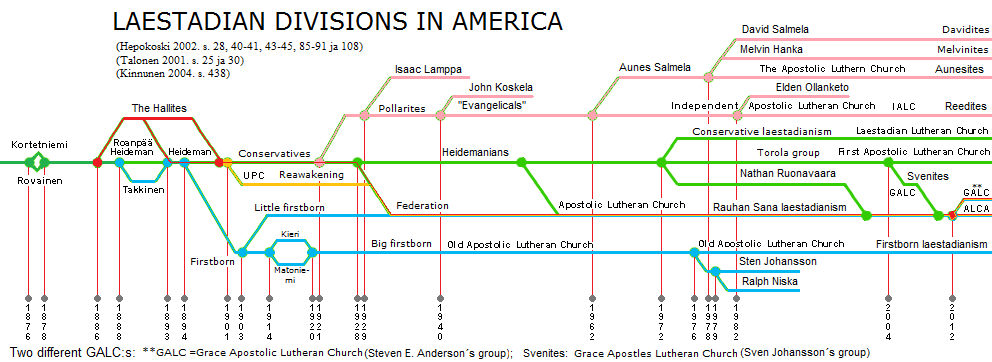|
Laestadian Lutheran
Laestadianism, also known as Laestadian Lutheranism and Apostolic Lutheranism, is a pietistic Lutheran revival movement started in Sápmi in the middle of the 19th century. Named after Swedish Lutheran state church administrator and temperance movement leader Lars Levi Laestadius, it is the biggest pietistic revivalist movement in the Nordic countries. It has members mainly in Finland, Northern America, Norway, Russia and Sweden. There are also smaller congregations in Africa, South America and Central Europe. In addition Laestadians have missionaries in 23 countries. The number of Laestadians worldwide is estimated to be between 144,000 and 219,000. Organization in Finland and North America Most Laestadians in Finland are part of the national Lutheran Church of Finland (cf. ''Communion of Nordic Lutheran Dioceses''), but in America, where there is no official Lutheran church, they founded their own denomination, which split into several sub-groups in the mid-20th century. ... [...More Info...] [...Related Items...] OR: [Wikipedia] [Google] [Baidu] |
Pietism
Pietism (), also known as Pietistic Lutheranism, is a movement within Lutheranism that combines its emphasis on biblical doctrine with an emphasis on individual piety and living a holy Christian life, including a social concern for the needy and disadvantaged. It is also related to its non-Lutheran (but largely Lutheran-descended) Radical Pietism offshoot that either diversified or spread into various denominations or traditions, and has also had a contributing influence over the interdenominational Evangelical Christianity movement. Although the movement is aligned exclusively within Lutheranism, it had a tremendous impact on Protestantism worldwide, particularly in North America and Europe. Pietism originated in modern Germany in the late 17th century with the work of Philipp Spener, a Lutheran theologian whose emphasis on personal transformation through spiritual rebirth and renewal, individual devotion, and piety laid the foundations for the movement. Although Spener did not ... [...More Info...] [...Related Items...] OR: [Wikipedia] [Google] [Baidu] |
National Church
A national church is a Christian church associated with a specific ethnic group or nation state. The idea was notably discussed during the 19th century, during the emergence of modern nationalism. Samuel Taylor Coleridge, in a draft discussing the question of church and state around 1828 wrote that :"a National Church might exist, and has existed, without Christianity, because before the institution of the ''Christian'' Church - as ..the Levitical Church in the Hebrew Constitution, ndthe Druidical in the Celtic, would suffice to prove". John Wordsworth, Bishop of Salisbury, wrote about the National Church of Sweden in 1911, interpreting the Church of Sweden and the Church of England as national churches of the Swedish and the English peoples, respectively. The concept of a national church remains alive in the Protestantism of United Kingdom and Scandinavia in particular. While, in a context of England, the national church remains a common denominator for the Church of Engla ... [...More Info...] [...Related Items...] OR: [Wikipedia] [Google] [Baidu] |
Forgiveness
Forgiveness, in a psychological sense, is the intentional and voluntary process by which one who may initially feel victimized or wronged, goes through a change in feelings and attitude regarding a given offender, and overcomes the impact of the offense including negative emotions such as resentment and a desire for vengeance (however justified it might be). Theorists differ, however, in the extent to which they believe forgiveness also implies replacing the negative emotions with positive attitudes (i.e. an increased ability to tolerate the offender). In certain legal contexts, forgiveness is a term for absolving or giving up all claims on account of debt, loan, obligation, or other claims. On the psychological level, forgiveness is different from simple condoning (viewing an action as harmful, yet to be “forgiven” or overlooked for certain reasons of “charity”), excusing or pardoning (merely releasing the offender from responsibility for an action), or forgetting (at ... [...More Info...] [...Related Items...] OR: [Wikipedia] [Google] [Baidu] |
Major General
Major general (abbreviated MG, maj. gen. and similar) is a military rank used in many countries. It is derived from the older rank of sergeant major general. The disappearance of the "sergeant" in the title explains the apparent confusion of a lieutenant general outranking a major general, whereas a major outranks a lieutenant. In the Commonwealth of Nations, Commonwealth and in the United States, when appointed to a field command, a major general is typically in command of a Division (military), division consisting of around 6,000 to 25,000 troops (several regiments or brigades). It is a two-star general, two-star rank that is subordinate to the rank of lieutenant general and senior to the rank of brigadier or brigadier general. In the Commonwealth, major general is equivalent to the navy rank of rear admiral. In air forces with a separate rank structure (Commonwealth), major general is equivalent to air vice-marshal. In some countries including much of Eastern Europe, major ... [...More Info...] [...Related Items...] OR: [Wikipedia] [Google] [Baidu] |
Finnish Defence Forces
The Finnish Defence Forces ( fi, Puolustusvoimat, sv, Försvarsmakten) are the military of Finland. The Finnish Defence Forces consist of the Finnish Army, the Finnish Navy and the Finnish Air Force. In wartime the Finnish Border Guard (which is its own military unit in peacetime) becomes part of the Finnish Defence Forces. Universal male conscription is in place, under which all men serve for 165, 255, or 347 days, from the year they turn 18 until the year they turn 29. Alternative non-military service for men and voluntary service for women is available. Finland is the only non-NATO European Union state bordering Russia. Finland's official policy states that a wartime military strength of 280,000 personnel constitutes a sufficient deterrent. The army consists of a highly mobile field army backed up by local defence units. The army defends the national territory and its military strategy employs the use of the heavily forested terrain and numerous lakes to wear down an aggre ... [...More Info...] [...Related Items...] OR: [Wikipedia] [Google] [Baidu] |
Oulu
Oulu ( , ; sv, Uleåborg ) is a city, municipality and a seaside resort of about 210,000 inhabitants in the region of North Ostrobothnia, Finland. It is the most populous city in northern Finland and the fifth most populous in the country after: Helsinki, Espoo, Tampere and Vantaa, and the fourth largest urban area in the country after Helsinki, Tampere and Turku. Oulu's neighbouring municipalities are: Hailuoto, Ii, Kempele, Liminka, Lumijoki, Muhos, Pudasjärvi, Tyrnävä and Utajärvi. Due to its large population and geopolitically economic and cultural-historical location, Oulu has been called the "capital of Northern Finland". Oulu is also considered one of Europe's "living labs", where residents experiment with new technology (such as NFC tags and ubi-screens) on a community-wide scale. Despite only ranking in the top 2% universities, the University of Oulu is regionally known in the field of information technology. Oulu has also been very successful in recent urban ima ... [...More Info...] [...Related Items...] OR: [Wikipedia] [Google] [Baidu] |
Mainline (Protestant)
The mainline Protestant churches (also called mainstream Protestant and sometimes oldline Protestant) are a group of Protestant denominations in the United States that contrast in history and practice with evangelical, fundamentalist, and charismatic Protestant denominations. Some make a distinction between "mainline" and "oldline", with the former referring only to denominational ties and the latter referring to church lineage, prestige and influence. However, this distinction has largely been lost to history and the terms are now nearly synonymous. Mainline Protestant churches have stressed social justice and personal salvation, and both politically and theologically, tend to be more liberal than non-mainstream Protestants. Mainstream Protestant churches share a common approach that often leads to collaboration in organizations such as the National Council of Churches, and because of their involvement with the ecumenical movement, they are sometimes given the alternative label ... [...More Info...] [...Related Items...] OR: [Wikipedia] [Google] [Baidu] |
Apostolic Lutheran Church Of America
The Apostolic Lutheran Church of America (ALCA) is a Laestadian Lutheran church denomination established by Finnish American and Norwegian immigrants in the 1800s. They came mainly from northern Finland and northern Norway where they had been members of the state churches. Most or all members had ties from their home countries to the Laestadian revival movement named after Swedish state church administrator and pastor Lars Levi Laestadius of Pajala, Sweden. Eventually, there were too many arguments between this denomination and the other American Laestadians, and some of the followers of Laestadius were excluded from the sacrament of holy communion. Under the lead of Salomon Korteniemi, the excluded members formed a congregation of their own in December 1872, under the name the Salomon Korteniemi Lutheran Society. In 1879 this name was changed to the Finnish Apostolic Lutheran Congregation. As other congregations of Finns in Massachusetts, Michigan, Minnesota, and Oregon were or ... [...More Info...] [...Related Items...] OR: [Wikipedia] [Google] [Baidu] |
The Firstborn Laestadianism
Firstborn Laestadians are a subgroup within the Laestadian Lutheran revival movement. The Firstborn are known for their traditionalism and their conservative pietistic ideals, and they seek to avoid "worldly pleasures". The name "Firstborn" derives from the Bible's Epistle to the Hebrews, Heb. 12:23, which mentions "the church of the firstborn". In Sweden, Firstborn Laestadians are often known as "West Laestadians" and have adopted a more critical attitude towards the Church of Sweden than other Laestadian groups. In the US and Canada, the Firstborn organized as the Old Apostolic Lutheran Church around the turn of the twentieth century. There are congregations in Alaska, British Columbia, Washington state, Wyoming, Montana, South Dakota, North Dakota, Minnesota, Michigan, Ontario, Delaware, North Carolina, New York, Washington, D.C. and Connecticut. The Firstborn are the largest Laestadian subgroup in the US. There are also many Firstborn Laestadian congregations in Finland a ... [...More Info...] [...Related Items...] OR: [Wikipedia] [Google] [Baidu] |
Laestadian Lutheran Church
The Laestadian Lutheran Church (LLC) is a religious Christian movement, its teachings based on the Bible and the Lutheran Confessions. From June 9, 1973, the organisation was named the Association of American Laestadian Congregations (AALC), before the association changed its name in 1994 in order better to convey its spiritual heritage. , the Laestadian Lutheran Church has 33 member congregations in the United States and Canada, with highest concentrations of members in Minnesota, Washington, Arizona, Michigan in the United States and in Saskatchewan, Canada; the congregations are served by about 90 ministers, nearly all of them lay preachers. In Northern Europe, the association's sister organizations are the Conservative Laestadians' Central Association of the Finnish Associations of Peace (') in Finland, the Sveriges fridsföreningarnas centralorganisation in Sweden, and the Estonian Lutheran Association of Peace ('). The main teaching among them is of Jesus' suffering, ... [...More Info...] [...Related Items...] OR: [Wikipedia] [Google] [Baidu] |
Conservative Laestadianism
Conservative Laestadianism is the largest branch of the Lutheran Christian revival, revival movement Laestadianism. It has spread to 16 countries. As of 2012 there were about 115,000 Conservative Laestadians, most of them in Finland, the United States, Norway, and Sweden.Talonen 2001. s. 25Talonen 2012. Lecture (in finnish) in Laestadius-seminar in Oulu 5. october 2012. Virtuaalikirkko has videos from seminar, and they are archived in Internet: The movement and this denomination attribute their teachings to the Bible and the Lutheran ''Book of Concord''. History Laestadianism received its name from Pastor Lars Levi Laestadius. The origin of the denomination's name from the Finnish-based word Conservative ("vanhoillis-") is unknown. In North and South America as well as in Africa this denomination is known as the Laestadian Lutheran Movement. The movement began in Swedish Lapland, Sweden, Lapland. Laestadius met a Sami people, Sami woman named Milla Clementsdotter of Fölli ... [...More Info...] [...Related Items...] OR: [Wikipedia] [Google] [Baidu] |






